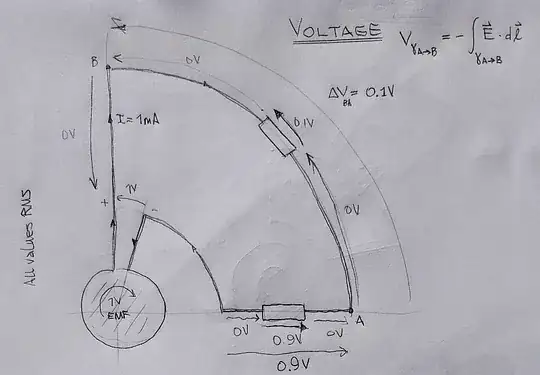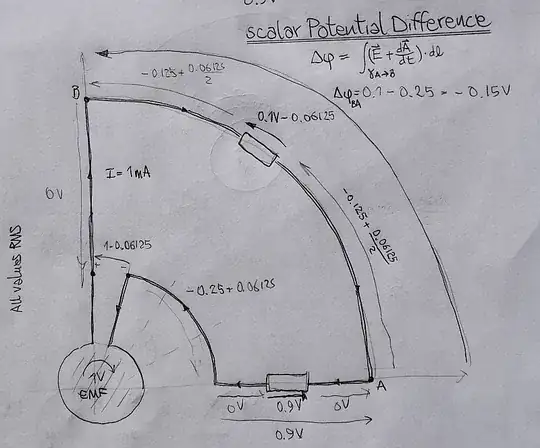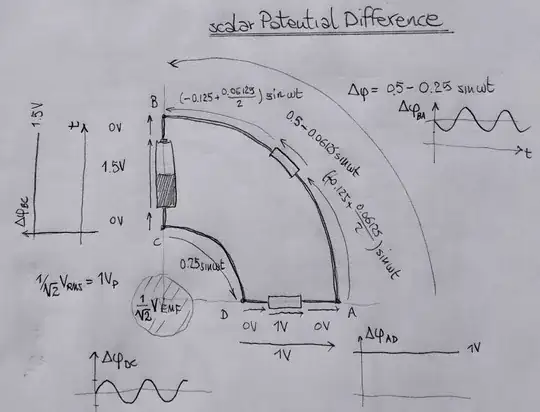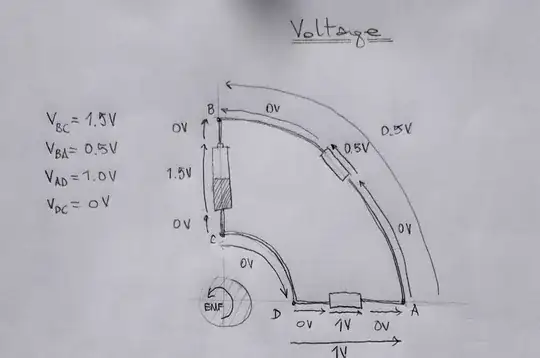I believe there should be an answer that showcases the advantages of the other version of voltage, so here it goes...
No, KVL does not always hold. If you extend the definition of voltage given in the electrostatic case to the more general dynamic case, that is if you define voltage as the line integral of the electric field (in accordance to ISO and IEC - two of the most important global standard organizations),
$$
V_{\gamma_{A \to B}}= - \int_{\gamma_{A\to B}}\vec{E} \cdot d\vec{\ell}
$$
then "voltage" and "potential difference" have different meanings since, when we decompose the electric field into its irrotational and solenoidal components ($ \vec E = - \vec \nabla \phi -\partial \vec A/\partial t $), we get
$$
V_{\gamma_{A\to B}}= \int_{A}^{B}\vec{\nabla}\phi \cdot d\vec{\ell}+\int_{\gamma_{A\to B}}\partial{\vec{A}}/\partial{t}\cdot d\vec{\ell} \\
= (\phi_B-\phi_A) +\int_{\gamma_{A\to B}}\partial{\vec{A}}/\partial{t}\cdot d\vec{\ell}
$$
This 'version' of voltage is in general path dependent and is composed of a scalar potential difference (which is the path-independent part to which Kirchhoff's loop law always applies) and a path-dependent induced voltage component. Beside complying with worldwide accepted standards, there are more cogent reasons to adopt this definition of voltage, namely:
- This voltage is the measurable quantity that happens to be what a voltmeter measures.
- This voltage is the physically relevant quantity that happens to be gauge invariant.
- This voltage does not require you to simultaneously specify another quantity (such as the magnetic vector potential A in space or 'the partial EMF' in the circuit) to completely describe the state of your circuit (ceteris paribus).
Moreover,
- This voltage does not lead to contradictions when you try to apply Ohm's law (such as "you can't apply Ohm's law to the coils of an inductor or transformer" or "a resistor does not always drop a 'voltage' equal to its resistance times the current flowing through it").
- This voltage does not change with (slowly varying) changing magnetic fields outside of your circuit and outside of your measurement loops.
The price to pay for the above advantages is that we have to deal with a path-dependent quantity that can assume more than one value when there are relevant time-varying magnetic field linked by either the circuit or the measurement loop. But wait: even if it is in general multivalued (because somewhere there are always variable magnetic field) this voltage can be single-valued in all simply connected regions of space that do not contain such fields.
This is why in lumped circuit theory it is required that all changing magnetic fields be confined inside the magnetic components (see the celebrated section 22-7 on the second volume of Feynman's Lectures - or any good circuit theory textbook) : if this condition holds, then the circuit path - which will presents jumps at the terminals of the magnetic components - can be made dB/dt free and all voltages between any two points on this path will be single valued.
Here's the difference between using voltage (as the line integral of the total electric field) and scalar potential difference (the line integral of the conservative part of the the electric field) in the case of an AC powered circuit. The source of magnetic induction is supposed to be an infinitely long circular solenoid with a single turn EMF of 1Vrms. Using voltage gives the usual values we expect from lumped circuit theory:

But if we choose to use the scalar potential difference, we get values that are inconsistent with Ohm's law and in general would require a numerical integration depedening on the shape, position and orientation of the circuit with respect to the source of magnetic induction:

Things get even weirder if we have a DC powered circuit just sitting next to a source of magnetic induction, without even linking it. This is the strange state of affairs when using the scalar potential difference:

We get time-varying (scalar) potential differences in a DC circuit! This is not something you see in any circuit theory textbook. Using the scalar potential difference as synonym of voltage in circuits near sources of magnetic induction can only cause unnecessary complications.
On the other hand, if we choose to use voltage we get the ordinary value we would expect in a DC circuit:

I have a few more examples that illustrate the remaining points. Maybe another day...



